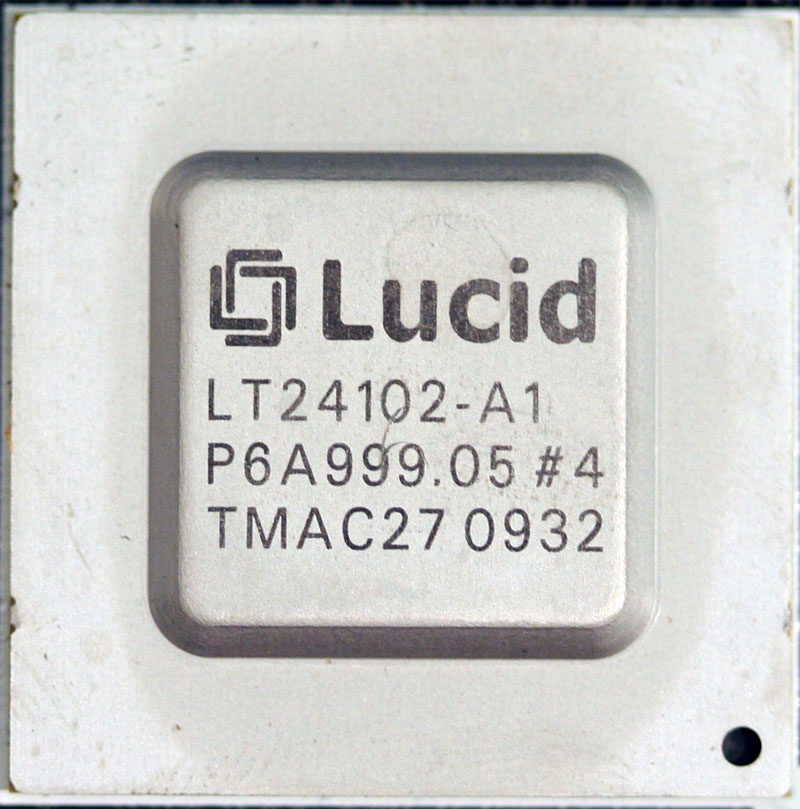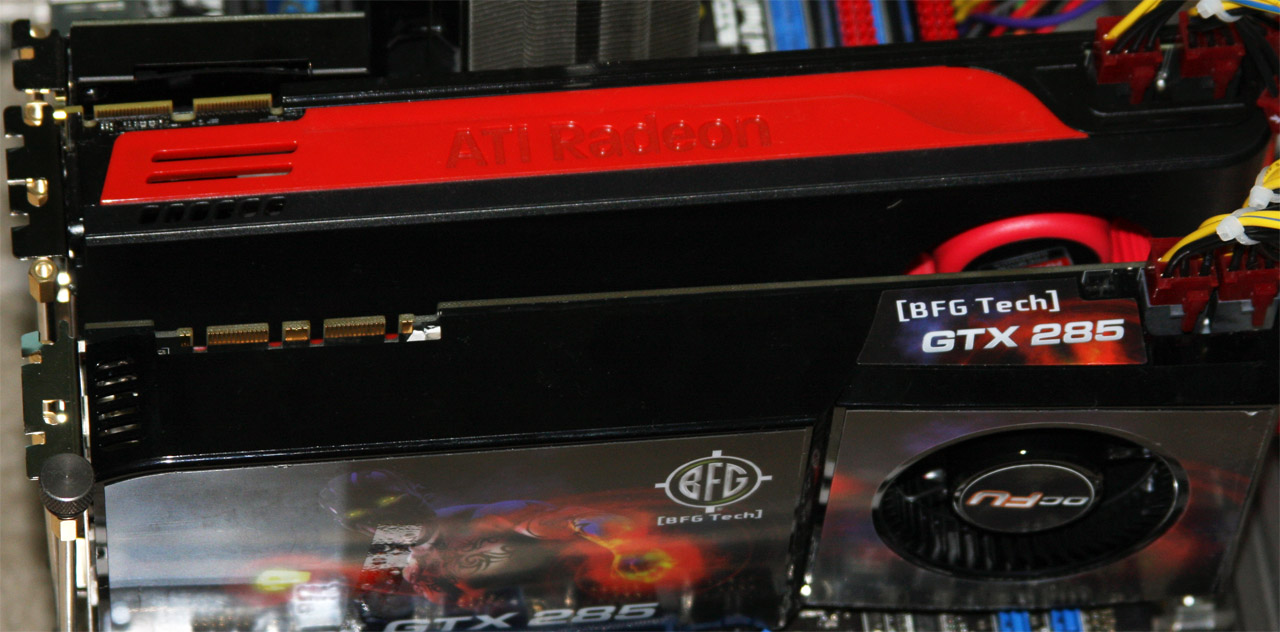MSI Big Bang Fuzion: Pulling The Covers Off Of Lucid’s Hydra Tech
It Began With A Bang!
I’ve never designed, marketed, and then tried to sell my own product before, but I’d like to imagine that if I did, I’d start by considering the number of potential customers who’d line up to pay me for what I was offering. Perhaps that’s why I’m so amazed to see a technology I first saw in action more than a year ago—LucidLogix’s Hydra distributed processing engine—productized in MSI’s Big Bang Fuzion motherboard.
But take a look at last month’s Steam hardware survey. A full 2.67% of respondents were running multi-GPU systems, and within that subset, 90% were utilizing SLI. For as big of a splash as we make over running two, three, or four graphics cards next to each other in gaming machines here on Tom’s Hardware, very few end users actually follow suit. Of those that do, a staggering number seem to be using GeForce cards.
Ah, but what fortunate timing for a company offering the ability to mix and match GPU models—vendor-agnostically—on the same motherboard. ATI is on top, and there’s almost certainly a contingent of GeForce GTX 200-series owners who wouldn’t mind an Eyefinity-equipped Radeon HD 5850 nudging their GTX 260 along.
Or maybe the 63% of gamers running Nvidia-based GPUs are fiercely brand loyal, and would rather add in a GeForce GTX 285 now that prices have come down a bit. Can’t do that with SLI unless you have a second GTX 285 installed. But the magic of Lucid’s technology is the freedom to use a GeForce GTX 260 next to a GTX 285. Or run a Radeon HD 4870 next to a Radeon HD 5850. Or—get this—drop a Radeon HD 5870 into a gaming machine next to a GeForce GTX 275.
The list of possible combinations is dizzying. And that’s another reason I’m so surprised Lucid and MSI were able to come together, showing off a platform that purports to do multi-GPU better than ATI and Nvidia, the former with five years of retail hardware supporting its CrossFire technology and the latter with six years worth of SLI-class gear.
Overcoming Challenges
Naturally, everyone we’ve seen preview Lucid’s technology has expressed skepticism. An advance this huge from a relatively small company’s rookie effort is fairly unprecedented. We’re more used to failures on the magnitude of Alienware’s Video Array, 3dfx’s Voodoo 5 6000, and BitBoys’ Glaze3D. So when a company tells you they can do something better than the two market leaders, you tend to look hard for signs they’re too good to be true.
Get Tom's Hardware's best news and in-depth reviews, straight to your inbox.
But when Lucid flew in to visit from Israel, accompanied by MSI North America, it was more than willing to answer questions and clarify some of the issues that had been hovering over its hardware/software technology since first debuting as a demonstration at IDF in '08.
Perhaps the most material obstacle that MSI will face in selling its Fuzion motherboard with the Hydra ASIC on-board is pricing. The company’s Trinergy, which belongs to the same Big Bang family and is armed with Nvidia’s nForce 200 bridge, is available for pre-order at $349. That’s well beyond the price of an X58-based platform, which natively gives you support for two 16-lane PCI Express 2.0 slots. MSI expects its Fuzion to sell for the same price—far more palpable if Lucid’s Hydra delivers on its promises. But even then, how many of the gamers constituting the 2.67% on Steam’s survey are willing to sink $350 on a P55 platform for the freedom to mix and match graphics cards?
Sounds like a question for the comments section. In the meantime, let’s look at how Windows 7 has changed the story for Lucid and how the company intends to QA two different vendors’ GPUs to keep its supporting software as up to date as ATI and Nvidia.
Current page: It Began With A Bang!
Next Page MSI’s Big Bang Fuzion Motherboard-
Maziar Nice article,its very good for users for upgrading,because for current SLI/CF you need 2 exact cards but with Lucid you can use different cards as well,but it still needs to be more optimized and has a long way ahead of it,it looks very promising thoughReply -
Von_Matrices I'm highly doubtful of the Steam hardware survey. I think it is underestimating the number of multi-GPU systems. I for one am running 4850 crossfire and steam has never detected a multi-GPU system when I was asked for the hardware survey. The 90% NVIDIA SLI seems also seems a little too high to me.Reply -
Bluescreendeath The CPU scores for the 3D vantage tests are way off. You need to turn off PhysX when benchmarking the CPU or it will skewer the results...Reply -
Bluescreendeath So far, the best scaling has been in Crysis. The 5870/GTX285 combo benchmarks looked very promising.Reply -
cangelini BluescreendeathThe CPU scores for the 3D vantage tests are way off. You need to turn off PhysX when benchmarking the CPU or it will skewer the results...Reply
It's explained in the analysis ;-) -
kravmaga "But when you spend $350 on a motherboard, you’re using graphics cards that cost more than that. If you’re not, you aren’t doing it right"Reply
Quoted from the last page; I disagree with that statement.
There are plenty of people in situations where using this board is a better investment performance per dollars. This is all the more relevant as this technology will undoubtedly find its way into cheaper boards and budget oriented setups where it will make all the sense in the world to bench it using mid-end value parts.
I, for one, would have liked to see what using gtx260s and 5770s would look like in this same setup. As is, this review leaves many questions unanswered. -
SpadeM Well the review does give an answer in the form of: It's better to run a ATI card for rendering and a nvidia card for physics and cuda (if u're into transcoding/accelerating with coreavc etc.) with windows 7 installed.Reply
Or at least that is the conclusion i'm comfortable with at the moment. -
HalfHuman i also agree with the fact that a person who will buy this board will necessarily go for the highest priced vid boards. maybe some will but not all. there will be more who will try to save the older vid cards.Reply
i also understand why you paired the 5870 with nvidia's greatest. there is a catch however... lucid guys did not have the chance to play with 5xxx series too much and you may be evaluating something that is not too ripe. i guess the 4xxx series would have been a better chance to see how well the technology works. couple that with games that are not yet certified for lucid, couple that with how much complexity this technology has to overcome... i think this is a magnificent accomplishment o lucid team part.
i also think that in order for this technology to become viable it will go down in price and will be found in much cheaper boards. for the moment the "experimenting phase" is done on the expensive spectrum. i saw some early comparisons and the scaling was beautiful. i know that the system put together by lucid... but that is fine since that was only a demo to show that it works. judging on how fast this guys are evolving i guess that they will go mainstream this year.



